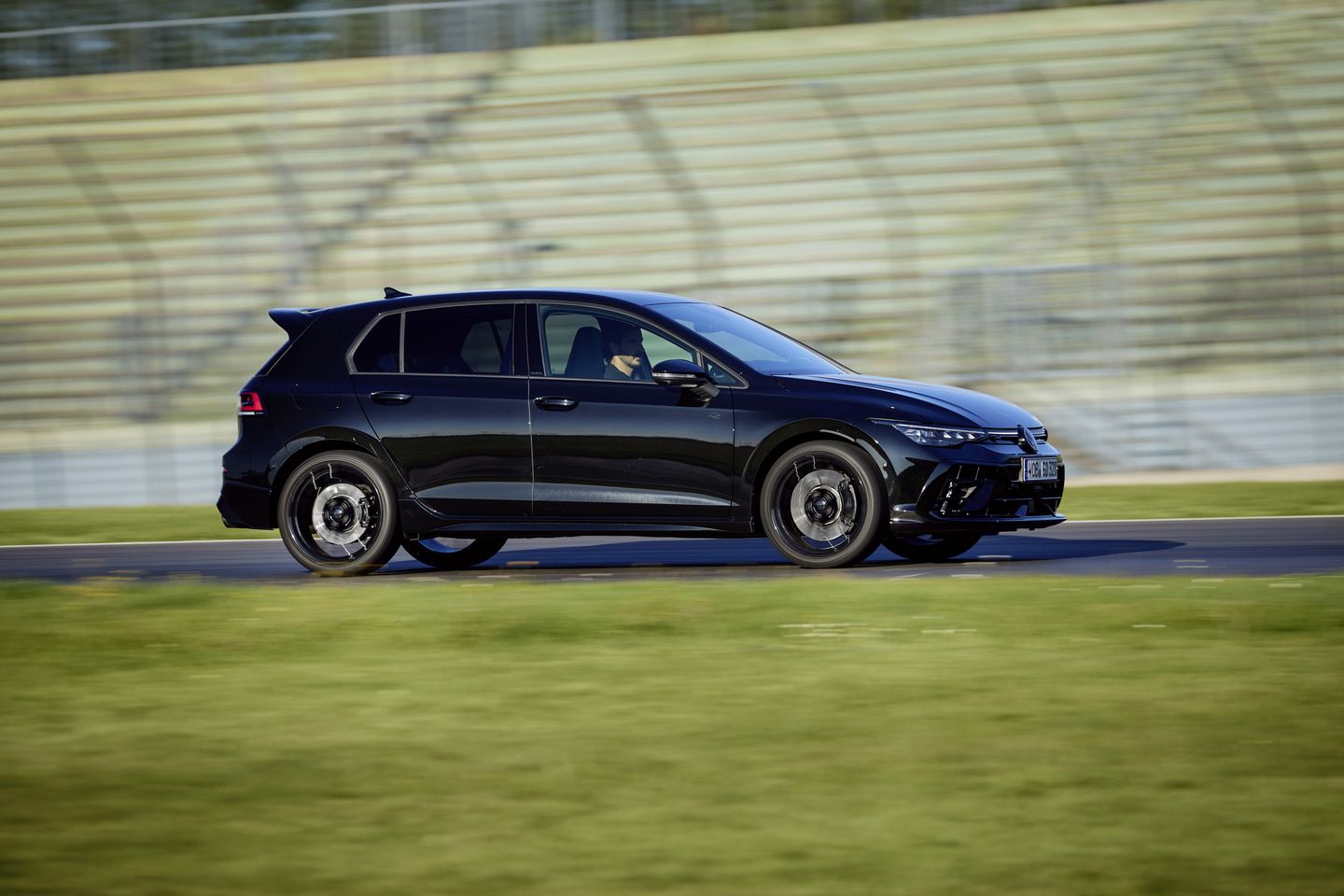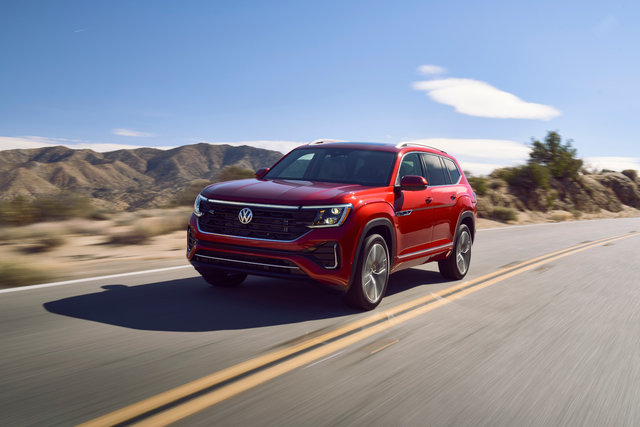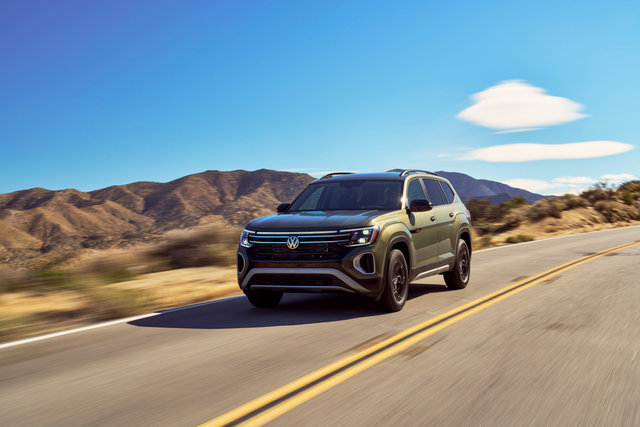Rain-slicked pavement on Capilano Road. Wet leaves covering Marine Drive in September. Sudden lane changes on Highway 99 during a downpour. These are the conditions North Vancouver drivers face regularly, and they require specialized traction control beyond standard all-wheel drive. The 2025 Golf R addresses these challenges with a rear-axle torque-vectoring system that actively distributes power between the rear wheels to maintain traction and stability when road conditions deteriorate.
This isn't a feature you'll notice on dry, sunny days. It's designed to work quietly in the background when conditions get difficult—precisely when you need it most. Understanding how torque vectoring functions helps explain why the Golf R handles British Columbia's wet roads with a level of control that feels noticeably different from standard all-wheel-drive systems.
How Torque Vectoring Works
The Golf R uses Volkswagen's 4MOTION all-wheel-drive system, but it includes an additional component: a rear-axle torque-vectoring differential. This differential can vary the amount of power sent to each rear wheel independently, adjusting in real time based on road conditions and driver inputs.
Here's what happens when you drive through a corner on wet pavement. As you turn, weight transfers to the outside wheels. The inside wheels carry less load and have less grip. Without torque vectoring, the system would send equal power to both rear wheels, which can cause the inside wheel to lose traction and spin. The Golf R's torque-vectoring system detects this scenario and shifts more power to the outside rear wheel, which has better grip. This keeps both wheels working effectively and helps the vehicle track through the corner more predictably.
The system operates continuously, making micro-adjustments that you don't consciously notice but that add up to a more stable, confident driving experience. It works at low speeds in parking lots and at highway speeds on wet freeway ramps.
Traction on Wet and Leaf-Covered Roads
British Columbia roads present specific challenges throughout the year. Rain is a constant factor from October through May, and wet pavement reduces tire grip significantly. Autumn brings fallen leaves, which create a slippery layer over the road surface, especially on shaded sections like those along Capilano Road or through Lynn Valley.
Standard all-wheel-drive systems send power to all four wheels but don't actively control how much power each individual wheel receives. If one wheel starts to slip, the system reduces power to prevent wheel spin, but this also reduces your ability to accelerate through the situation.
The Golf R's torque-vectoring system takes a different approach. Instead of simply cutting power when a wheel slips, it redirects that power to the wheel with better grip. This means you can maintain forward momentum and stability even when one side of the vehicle is on a slippery surface. From navigating rain-soaked intersections to accelerating out of corners on leaf-covered roads, the system keeps the vehicle balanced and responsive.
Stability During Sudden Lane Changes
Highway driving introduces another set of demands. When you need to change lanes quickly to avoid debris or merge into traffic, the transition can unsettle the vehicle, especially on wet roads. The weight shifts suddenly, grip changes, and the vehicle needs to stabilize quickly.
The torque-vectoring differential responds to these inputs by adjusting power distribution between the rear wheels. If the system detects the vehicle beginning to rotate or drift during a lane change, it counters this by sending more power to the appropriate wheel. This helps keep the vehicle tracking in the direction you intend, reducing the need for corrective steering and making the maneuver feel more controlled.
This becomes particularly useful on Highway 99, where traffic patterns can require quick reactions, or on the approach to the Lions Gate Bridge during rush hour when conditions are both wet and congested.
Enhanced Cornering Control

Torque vectoring improves cornering performance by actively helping the vehicle rotate through turns. When you enter a corner, the system directs more power to the outside rear wheel. This creates a subtle rotational force that helps the vehicle turn more naturally, reducing understeer—the tendency for the front of the vehicle to push wide in a corner.
On mountain roads leading to Whistler or the tight curves along the Upper Levels Highway, this translates to corners that feel more precise and easier to navigate. The vehicle responds more directly to steering inputs, and you spend less time making small corrections. This isn't about driving aggressively; it's about making everyday driving feel more predictable and less tiring, especially on routes you drive regularly.
Key Takeaways
|
Feature
|
Benefit
|
|
Rear-Axle Torque Vectoring
|
Distributes power between rear wheels independently for optimal traction
|
|
4MOTION All-Wheel Drive
|
Sends power to all four wheels as needed for year-round grip
|
|
Dynamic Power Distribution
|
Adjusts continuously based on road conditions and driver inputs
|
|
Enhanced Wet-Road Traction
|
Maintains grip on rain-slicked or leaf-covered surfaces
|
|
Improved Cornering Stability
|
Reduces understeer and increases precision through turns
|
|
Lane-Change Confidence
|
Stabilizes the vehicle during sudden maneuvers on wet highways
|
Performance Specifications
The Golf R pairs its torque-vectoring system with a turbocharged 2.0 L 4-cylinder engine that produces 328 horsepower and 295 lb-ft of torque. Power is managed through a 7-speed DSG dual-clutch automatic transmission, which shifts quickly and works with the torque-vectoring system to deliver power where it's needed.
The vehicle's curb weight is 1,545 kg, and it includes Dynamic Chassis Control with adaptive damping and Driving Profile Selection. These systems work together with the torque-vectoring differential to adjust the vehicle's behavior based on your preferences and current driving conditions.
The Golf R also includes an Electronic Differential Lock (XDS) on the front axle, which complements the rear torque vectoring by controlling wheel slip at the front. Together, these systems create a coordinated approach to traction management across all four wheels.
Why It Matters for North Vancouver Driving
North Vancouver presents a mix of urban streets, highway corridors, and mountain roads, all subject to frequent rain and seasonal challenges like fallen leaves and occasional snow. The Golf R's torque-vectoring system addresses these conditions directly by improving traction, stability, and control when roads are at their most unpredictable.
This system isn't about track performance or aggressive driving. It's about making daily commutes safer and less stressful. It's about feeling confident when you need to merge onto a wet highway or navigate a corner covered in wet leaves. It's about arriving at your destination feeling like the vehicle worked with you rather than against you.
The technology operates automatically, requiring no driver input or special modes to activate. It's always working, always adjusting, and always focused on keeping the vehicle stable and predictable.
Learn More at Capilano Volkswagen
Torque vectoring is one of those features that's difficult to fully appreciate until you experience it in person. Visit our team at Capilano Volkswagen in North Vancouver to explore the Golf R and understand how its torque-vectoring system changes the way the vehicle handles on wet roads. We're here to answer your questions and help you experience the difference for yourself.








